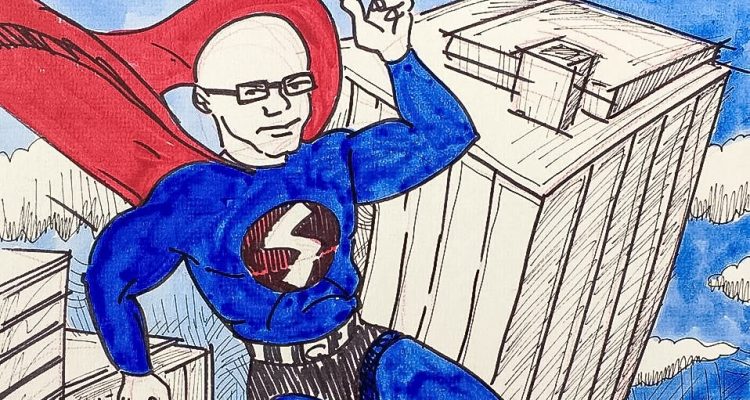Oh, wow, Bob, you were named West Virginia’s 2016 Artist of the Year! Congratulations!!
“Um, yeah. Thanks.”
That’s all I get?
“Well, I’m pumped about it. I am. But I didn’t even know such a thing existed. I’m not sure how that got by me but I guess it did.”
Yup, that’s Bob Villamagna for you. Concise and humble at the same time when explaining what it is he does to create, and the man admits, “Sometimes when an artist tries to explain what they are working on the people hearing it think, ‘Well, that doesn’t sound all that interesting.’ So you never know.”
What he does know is that, of all artists in the Mountain State, someone somewhere nominated him.
“When I got the phone call from the Arts and Culture Commission, I guess I felt like I won a mini Academy Award or something,” Villamagna said. “I feel really honored, and I got a little misty about it because it shot me back to my childhood because at a pretty early age I knew I wanted to be involved somehow with the visual arts, but at first my life really didn’t go in that direction.
“Art was in my life, but during the first 30 years of my life I was a steelworker and did some other things. I’ve always been making art, and I tried to keep it in my life, but that didn’t always work out because I had to do what I had to do,” he continued. “But it wasn’t until I started teaching part-time at West Liberty University (in 1996) when I was actually working in the field.”
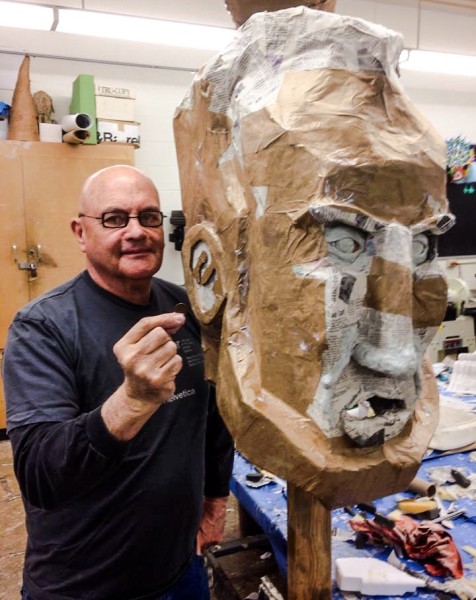
He knew, Villamagna admitted, at the age of 5 that he possessed skills while being raised in a community close to Weirton.
“My mother and soon-to-be step-father took me to the Carnegie Museum in Pittsburgh, and we visited the Natural History side. In one room there were these knights in armor in cases, and these things had a big impact on me,” he recalled. “When I got home, my grandfather always had these pads of paper that he brought home from the power company in Toronto. They had these blue grids on them, and he also had these big fat pencils sitting around.
“So I took those things and lay on the floor, and I started drawing those knights in armor, and my stepfather looked down and said, ‘Bobby, those look just like what we saw today,’” Villamagna continued. “I think that had a major impact, and it stuck with me, and I kept wanting to do more and more and more.”
Villamagna, who earned a bachelor’s degree from Franciscan University and a master’s degree from Wright State, paints watercolors and draws, and he’s even created his own cartoon characters through the years, including a pseudo-superhero called “Sharpie Man.”
“I used to have these dreams when I was a kid, and one of them was to become a political cartoonist even though I had no concept of politics whatsoever,” he said, with a laugh. “But I also loved Batman and Superman and characters like that, so I guess that’s where ‘Sharpie Man’ came from.
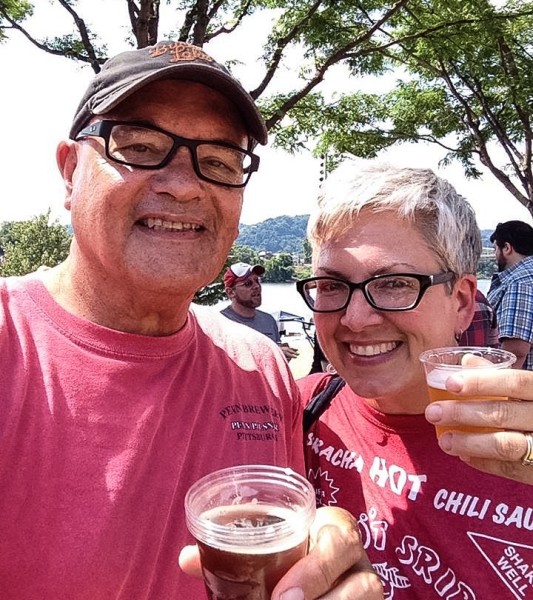
“’Sharpie Man’ was done for a faculty show several years ago, and I ran across those, and that’s why I put them on Facebook,” he continued. “They were on the wall at the Nutting Gallery, but Facebook was just another way I could show them again. Doing those was a really a lot of fun.”
He and his wife, Chris, recently celebrated their 20th wedding anniversary, and the couple has resided in the Wheeling area most of those two decades. While Villamagna is now a full-time art professor at West Liberty, Chris works for the Wheeling National Heritage Area Corp.
He is very thankful two galleries in the Pittsburgh area regularly display and sell his work, one in Lawrenceville and the other in the Strip District, but it is the competition exhibitions that really supply the highs and lows involved with being an artist.
“Anytime you are putting your work up to be juried, you know that your work may or may not be accepted, and I think you have to develop a little thick skin,” Villamagna said. “Those jurors decide whether you’re in or you’re out, and when you’re out, it doesn’t always feel real good, but I have a saying I’ve used for about the past 10 years, and that’s if you are not being rejected, you’re not reaching far enough. I tell my students the same thing.
“You do have to put yourself out there, and at times it’s not going to work out the way you would like it, but you have to take some shots at it,” he explained. “I’ve entered my work in a lot of different shows, and sometimes I get in, and other times I don’t. That’s the life.”
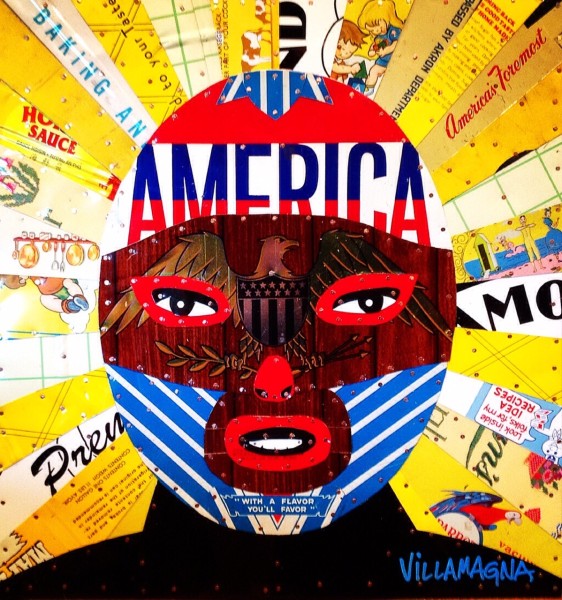
His son Jeremy, though, allowed Villamagna to adopt a new way of considering an artist’s reality of rejection.
“I’ve never been a big sports guy, but my son played baseball through high school and at West Liberty, and he asked me one day how my career was going with my art. I told him that I had received another rejection. He then asked me how many rejections I had in the past year, and I told him, and then he asked how many shows I had gotten into, and I told him that, too.
“He was quiet for something like 20 seconds, and then he says, ‘Well, Dad, do you realize that based on your record so far this year, you would be batting like 700 percent?’ He said that in baseball I would be the ultimate superstar, and ever since then I try to look at my yearly success with getting into shows,” he explained. “That’s how I measure it now, by comparing it to baseball.”
It remains difficult to describe his work because while it fits into a few different genres, the assemblages are abstractly unique. From a distance his works may appear to be painting, but as you crawl closer you realize it is an art form you’ve never seen before. That’s when you see that three-quarter-inch nails are a part of piece. In a 2012 article WVLIving.com writer Carter Taylor Seaton referred to Villamagna as, “The Tin Man,’ and that’s because of the thrown-away materials he salvages before the metals are buried deep within the Earth.
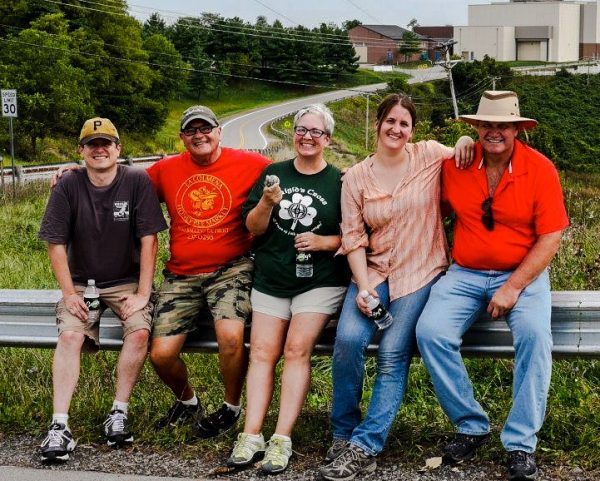
“I’m a mixed media artist, and for the majority of my work I use found objects and materials,” Villamagna explained. “A lot of that tends to be repurposed lithograph metal. What does that mean? It means old coffee cans, different product containers, old signs, and I tend to flatten them out, cut them up, and then sort them out.
“That’s my palette, and normally one of two things usually happens. One, I will get an idea like anyone else gets ideas for things wherever they may be,” he continued. “The other times I usually find a piece of metal or see an image, and that’s when I know exactly what I’m going to do with that.”
Some of his pieces are “whimsical,” said Erika Donaghy, the chair of the Wheeling Arts and Cultural Commission. She credits Villamagna, in fact, as the reason she now is an accomplished woodwind musician and also a graphic designer.
“As an artist and educator, he has inspired countless people to pursue their visions and has represented W.Va. arts as truly forward thinking and viable,” Donaghy said. “Villamagna is an absolute treasure for West Virginia and Wheeling. We live in a more interesting and colorful community and state because of his wealth of talent.
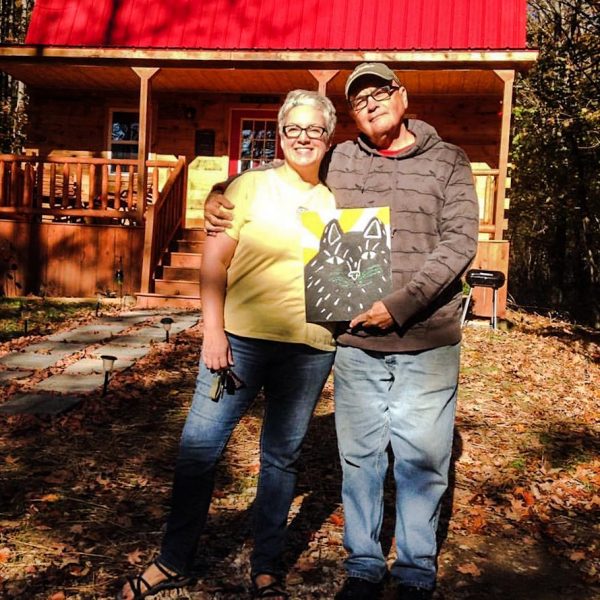
“I’m particularly fond of his work ethic as an artist,” she continued. “He always says that a true artist gets up every day and makes art not just on a whim but every day. He says it much more eloquently.
“Bob has been an important part of the revitalization of Wheeling, too. His public art has been part of the catalyst that has changed the perception of what this city is and can be. When you drive past his work, you can’t help but smile, and that is an important part of the emotional health of a town,” Donaghy added. “When you can take pride in your community and be excited about what is found inside of it, then a change in perception happens. That positive change is what Bob Villamagna has given West Virginia.
And, yes, he’s always working on his next masterpiece, and the next one the public will see is a tribute to East Wheeling resident Charles Waldrum. Villamagna’s “Moondog” will be shown during Oglebay Institute’s annual Crosscurrents Exhibition. The gallery opens today at 5 p.m., will remain in place until May 20, and will be juried with cash prizes awarded to the winners.
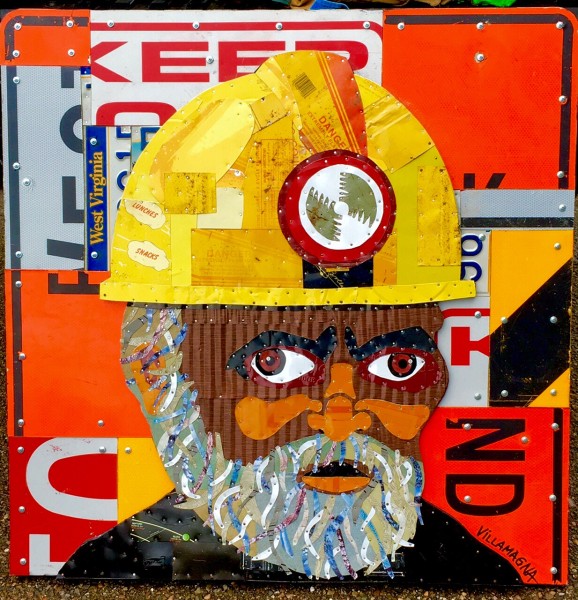
“I started it about a month ago, and it’s all metal although in the beginning I thought I would do his face and make the background with the metal. I just didn’t know if I could pull it off in metal,” he explained. “So then I cut out a silhouette for it with plywood, and just as I was about to begin painting it, I decided, ‘Damnit, I’m going for it.’
“I thought that if I screwed it up, I could save it somehow by just ripping it all off and then painting it,” he continued. “And I got into it, and it turned out pretty good,” he said. “I like it, and I hope those who see it do too.”
He traveled with his bride to Charleston yesterday and shook hands with Gov. Earl Ray Tomblin and with Randall Reid-Smith, the commissioner of the state’s Arts and Cultural Commission. He collected his award and then traveled home to the Friendly City, where he knows he’s still only as good as his next piece of art.
At least this “Tin Man” admits he does have a heart.
“I am truly honored by it, but you also know that the next show you enter an exhibition it doesn’t mean anything. It’s like yesterday’s newspaper,” Villamagna said with a laugh. “In my heart I am very honored, but the next day I’m not sure how much it means to anyone.”
(Photos provided by the Villamagnas)


